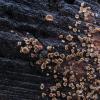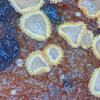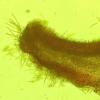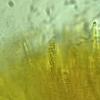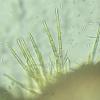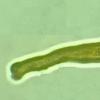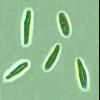
24-12-2023 11:59
Hi all, first post.Just started looking at Ascos,

22-12-2023 18:53
Karl Soler KinnerbäckThis discomycete was found on Huperzia selago in n

21-12-2023 10:27
 Michel Hairaud
Michel Hairaud
Bonjour, et merci pour toute aide à déterminer

24-12-2023 08:12
Very small, perhaps 1 millimeter, on wood, in fore

22-12-2023 19:27
 Robin Isaksson
Robin Isaksson
Hi This one was found on betula in northern Sweden

22-12-2023 09:52
Patrice TANCHAUDBonjour, récolte sur hépatique accrochée à l'

22-12-2023 16:04
 Lothar Krieglsteiner
Lothar Krieglsteiner
... from Portugal, Algarve, West coast, on Typha.D

21-12-2023 12:46
Fraser HigginsHello, I'm entirely new to this forum, ascomycete

08-12-2023 01:32
Stefan JakobssonNow is the time of the year to have a look at old
Asco sp.
Gwenaël Cartier,
23-12-2023 05:43
Forêt de feuillus, sur un vieux tronc
Étude sur spécimens vivants
Apothécie de 2 mm max beige avec poils crèmes
Poils externes septés
Asques (12 spores ? bisériées) amyloïdes à l'apex
Me = 63,1 × 4,2 µm ; Qe = 15
Spores fusiformes clavées, hyalines, amyloïdes
(6,7) 6,5 - 9,8 (11,4) x (1,2) 1,3 - 2,4 (2,4) µm
Q = (3,9) 3,3 - 4,2 (7,2) N = 32
Me = 7,7 x 1,7 µm Qe = 4,6
https://flic.kr/p/2pnSV5L
Hans-Otto Baral,
23-12-2023 09:40

Re : Asco sp.
Your micros are regfettably in dead state. Important: ascus iodine reaction, croziers, spore contents, paraphyses lanceolate? warted at top?
Gwenaël Cartier,
24-12-2023 17:22
Re : Asco sp.
Toutes les photos micro ont été prises avec du Melzer sauf celle avec les poils externes où on voit des spores hyalines. Sinon on voit bien que les spores sont amyloïdes ainsi que les parois externes des asques . Je ne comprends pas pourquoi vous dites qu'ils sont morts, ils avaient l'air bien vivat à mon avis. J'ajouterai une photo
Hans-Otto Baral,
24-12-2023 21:48

Re : Asco sp.
You can believe me, in Melzer nothing survives, it is toxic and the high osmotic activity shrinks the asci and spores and masks the cell contents.
An amyloidity of the spores I cannot recognise as I do not see one of the asci.
You need to take the fresh fungus in water to see living cells, by avoiding any pressure.
